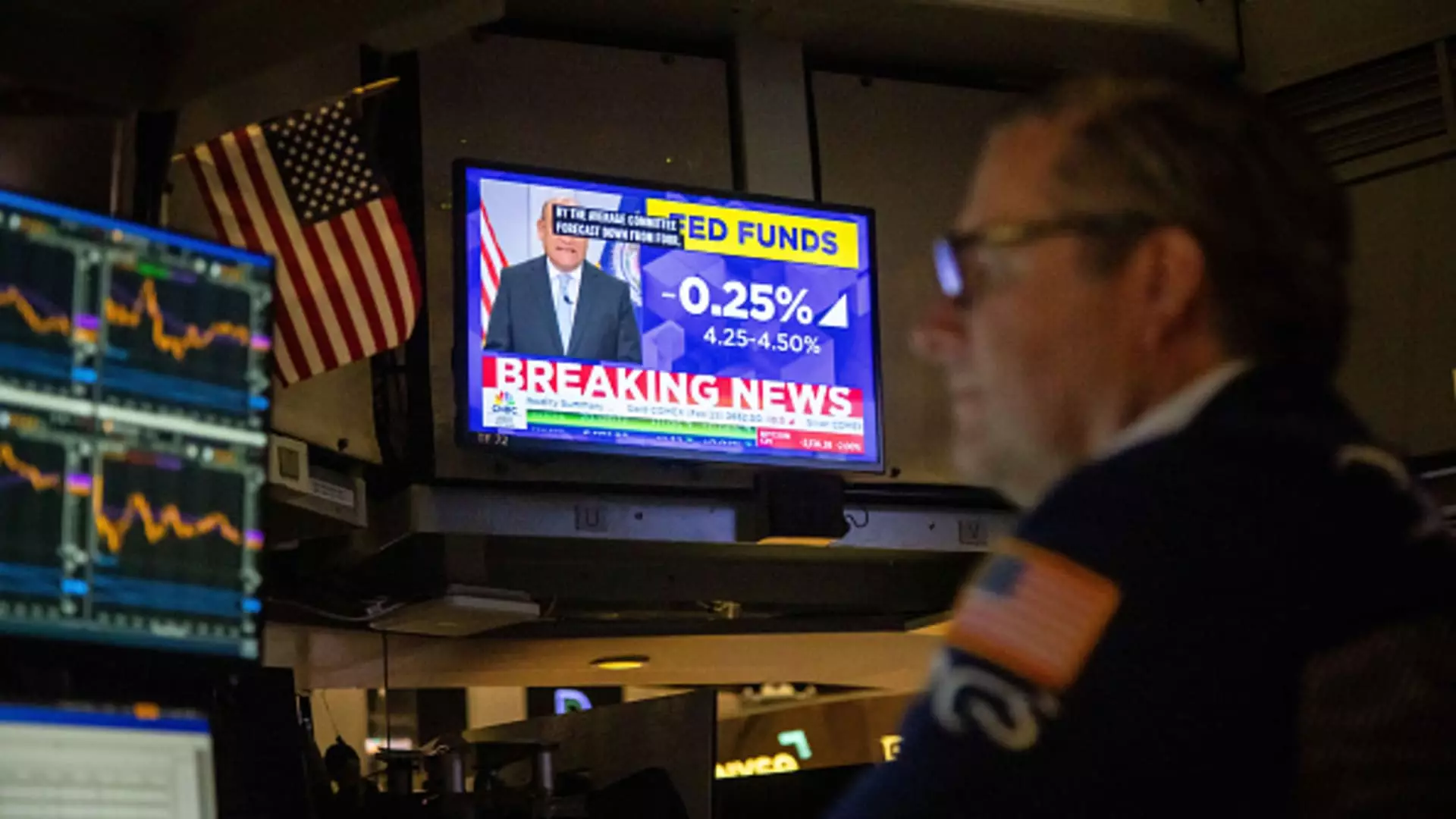In a dramatic turn of events, Wall Street observed a significant spike in the CBOE Volatility Index (VIX), an essential gauge of market sentiment, following the Federal Reserve’s announcement regarding interest rates. Investors were taken aback when the Fed revealed it would only implement two rate cuts next year, a striking reduction from the previously anticipated four cuts. This announcement sent shockwaves through the market, triggering an astonishing 74% increase in the VIX, which closed at 27.62, a leap from the day’s earlier levels of around 15. Such a marked rise is notable, second only to a historical spike of 115% witnessed back in February 2018 during a tumultuous period for volatility funds.
The Fed’s shift towards a more conservative monetary policy ignited fears among investors, leading to a turbulent day on the trading floor. The Dow Jones Industrial Average fell significantly, plummeting by a staggering 1,100 points, marking its tenth consecutive day in the red. The VIX crossing the 20 threshold signifies heightened anxiety among investors regarding future market movements. Notably, throughout much of the current year, the VIX had been trading below this critical point, raising alarm amongst analysts who interpreted such low levels as a sign of investor complacency. The prevailing belief was that the stock market had become insensitive to underlying economic risks.
The VIX serves as a barometer for market volatility and is constructed from the pricing of options on the S&P 500 index. This spike in the VIX is often indicative of investors rushing towards put options, seeking to hedge against the potential for further declines in stock prices. The recent climbing of the VIX reflects a bearish outlook as market participants brace for uncertainty. Historical analysis shows that large VIX movements usually correlate with substantial market corrections, thus amplifying the concerns of investors about the current economic climate.
Interestingly, other notable VIX advances have occurred this year, including one on August 5, 2024, when it surged by approximately 65% amid anxieties of a possible U.S. recession and a significant unwind of the yen carry trade. On that dramatic day, the VIX reached an intraday high of over 65. Such parallels underline the fragility of current market conditions, where fear and uncertainty reign.
As of Thursday following the Fed’s announcement, the VIX had receded to just above the 20 mark, showcasing a notable decrease of over 25% from its previous day’s close, hinting at a potential cooling of tempers in the market. However, with the persistent pressures surrounding interest rates and global economic stability, the financial markets remain on edge, keeping a watchful eye on future movements in the VIX and what it may signal about investor sentiment going forward.

